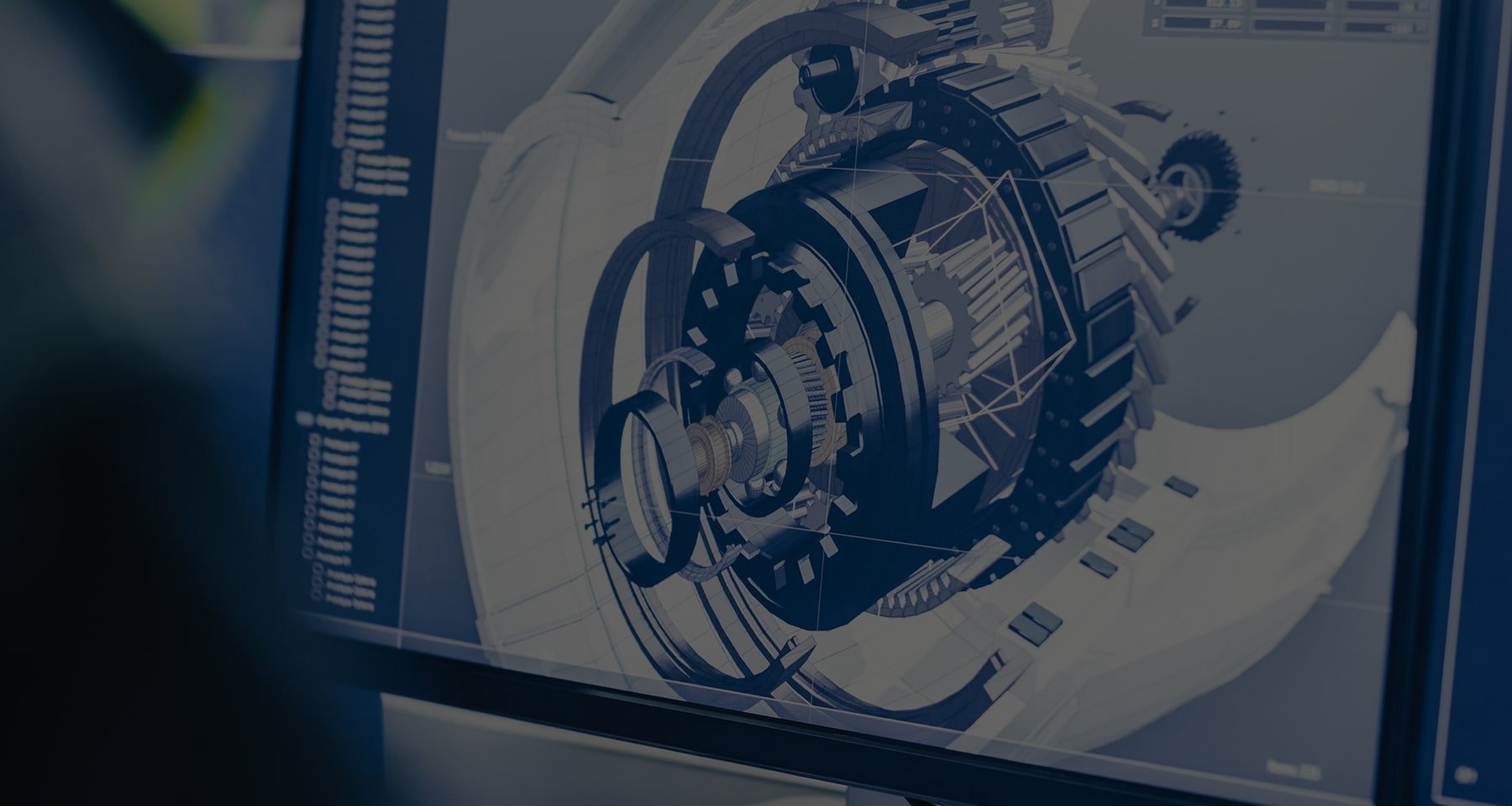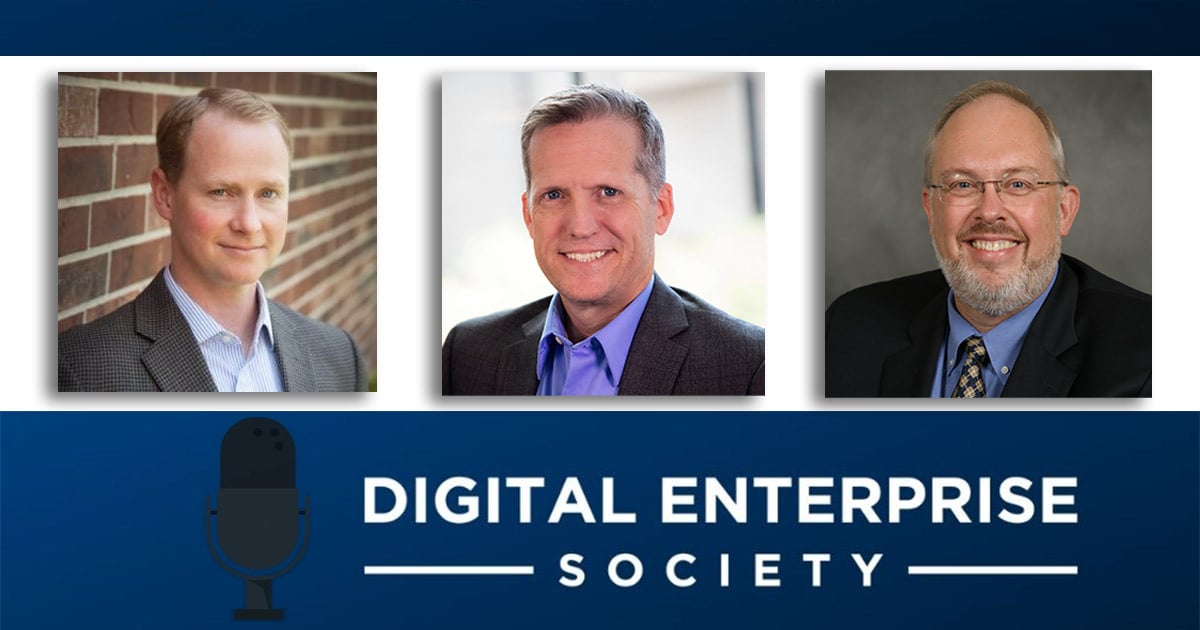
Daniel Campbell, Director of business development at Capvidia, joins Digital Enterprise Society's Thom Singer and Craig Brown for an interview about Measuring The Benefits of The Digital Twin.
Digital Enterprise Society is an industry-leading podcast about transformation to the digital enterprise. They're thought leaders informing engineers & professionals about emerging topics in digital transformation.
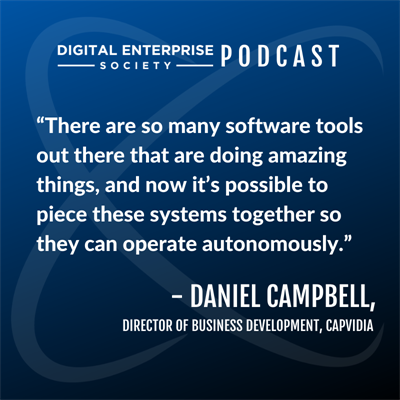
Below is an edited transcription of the podcast.
About Capvidia
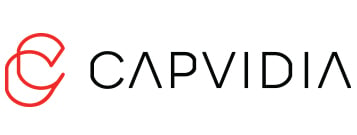
Thom Singer:
Daniel, what's your background? How did you get into this crazy world?
Daniel Campbell:
My background is actually in the field of simulation of coordinate metrology, so CMM machines.
We– a couple of my early business partners–created a product called Pundit CMM, which is an offline CMM simulation tool to basically carry out a simulation of a CMM measurement in order to calculate what the measurement uncertainty is going to be for everything that's being measured.
So that is my background and that's really what brought the world of model-based definition.
We as metrology software vendors, we really felt the need for model-based definition data. It would've been a big thing for us to be able to get some of this MBD data to make sure that the people who are using the simulation software don't have to type in data again that's already entered into their CAD system.
So that kind of brought us into the whole CAD world and PLM world.
Craig Brown:
And then how did you get to Capvidia?
Daniel Campbell:
So Capvidia acquired the Pundit software three years ago. And when that happened, I came over with Capvidia and since then I've kind of taken over the operations of trying to grow the business.
Not only with the Pundit software, but really focusing a little more broadly on model-based definition efforts.
Cause I think that it's kind of put us in a unique position where we really do bridge the gap between a good understanding of downstream applications like metrology applications and then the source: the CAD data– the CAD and PLM data, which is always what Capvidia's background is.
About The Digital Twin
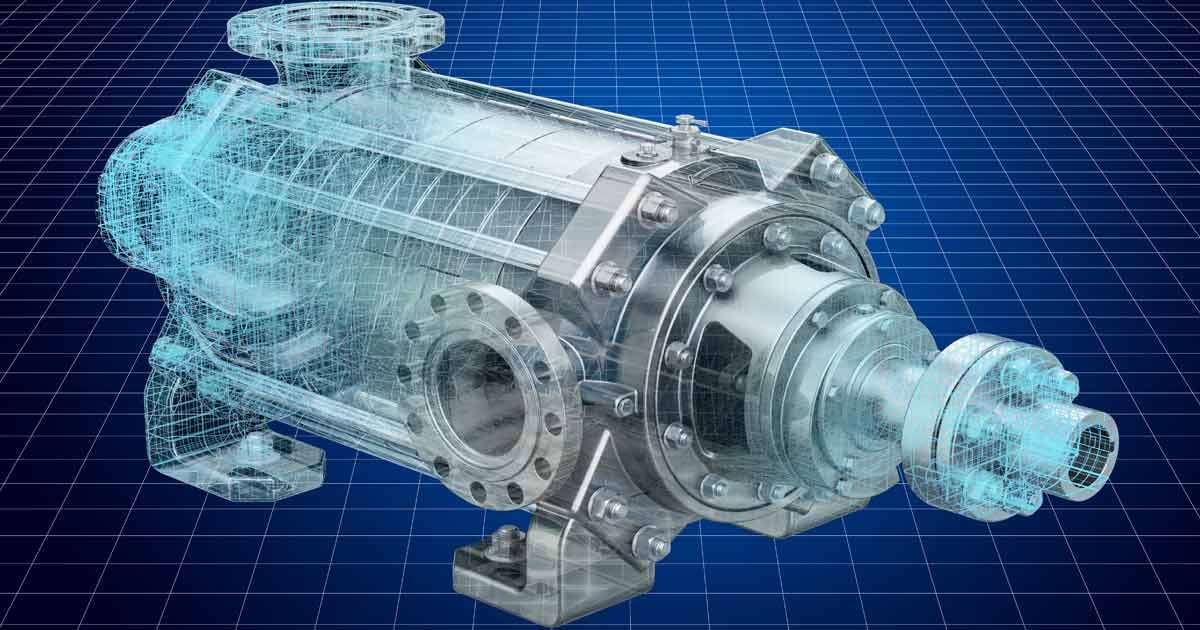
Craig Brown:
This is really important, everybody.
And it's a hurdle that's part of why we wanted to talk today. A lot of times the people that have started using CAD, especially if they're replacing drafting operations, it's all about just let's get the model put together.
You're looking at a different problem, which is the machines that are on the manufacturing line, they're taking measurements. And if I understand it correctly, you're simulating uncertainty and whether those measurements are accurate and then what's that effect on manufacturing. Is that right?
Daniel Campbell:
Exactly. When it comes to the Pundit software, the point of what it's trying to do is understand the measurement system that I'm going to use to measure and validate this part. Is it adequate or not? Am I measuring this thing correctly or not? Can I trust the numbers that are coming off of my CMM machine or not?
Craig Brown:
Yeah. And a lot of times there's a standard on a part of a finished standard or a milling standard, and you'll wonder where that stuff comes from and it's probably proven over time, at least somebody like a car company, it's proven over time.
But my point is a lot of times there's things specified that you can't measure and then you figure that out later that, 'Oh wow, at this line rate, there's no way I could measure that accurately.'
And so I think that's where you guys come in. You can help say, 'Well this will be great, but we don't measure that way or you need a different kind of instrument if you want that kind of precision.'
Daniel Campbell:
Exactly. I mean, what it all boils down to is basically the GD&T, the geometric dimensioning and tolerancing, which is placed on part.
If you're going to validate that and you want a manufacture to that, then you measure to make sure that the actual manufactured good does meet those GD&T requirements.
Hopefully you have the manufacturing capabilities and the measurement capabilities to meet the tolerances that are specified at the design state.
Craig Brown:
Or go the other way, make it clear. The designers don't specify something that has to have that tolerance, right? If I'm a big successful industrial company, I have my current practice for measurement, right, and milling and all the rest, right?
So why would you design something I can't do so? So it's capturing the bill of process of manufacturing including measurement and making it clear upstream while designing parts that are within these boundaries. And I think this is where simulation is, it's one of its biggest benefits is it can show you how soon you get close to a boundary.
About Design & Manufacturing

Daniel Campbell:
Absolutely and really the entire field of model-based definition. That's what it's all about.
So the current state of manufacturing enterprise is that the design side of the house, the design engineering side is really pretty separate from the manufacturing and measurement side of the house.
And so this type of communication that you're talking about, it doesn't really happen right now.
Craig Brown:
And so why are they separate? What's your insight there?
Daniel Campbell:
So organizationally, first off, they are typically separate business units. Some companies might have design engineering and manufacturing in the same group, but it's usually pretty typical that they actually are separate business units.
And then the other thing is just in terms of their software systems, they're quite different, quite separate. On the design side you're dealing with PLM software and CAD software.
And then on the downstream manufacturing side, you have a huge number of different software systems that are used for all the various manufacturing, measurement, assembly, MES and all these other processes which are carried out downstream.
And theoretically they need to consume that CAD data or the PLM data. But often the handoff between those two domains of these different software systems is really not very good. Especially when it comes down to a detailed level about the part like the geometry of the part, like the GD&T on the part and so forth.
Craig Brown:
I know a lot of us in my experience, you keep going to a big tool vendor and you say, 'Oh, surely you've got an end to end solution.' And of course the sales guy will always say he does, right?
And then when you start plugging it together, you find out 'Well, it's really great at one aspect of engineering or manufacturing engineering, of the planning, of manufacturing–well, not so great at other aspects.'
This dichotomy of tools or having separate tools also leads to the, I think that organizational thing you pointed out about, well then the guy up front where the MBD data probably should be entered sometimes doesn't see the value in this downstream information that they've never interacted with before.
So how do you get them convinced they should put in the GD&T and other such things?
About Benefits of MBD
Daniel Campbell:
That's an important part of it is trying to deal with the people side of it.
Sometimes there is a business problem in the sense that the budgets for manufacturing and for design are separate– separate budgets, separate business units.
So on the design side is where the cost would be for adding more [budget] for creating model-based definition but the benefits for the manufacturing side. That's part of the struggle. Often, it's trying to deal with that.
Now as it turns out, the answer to that is the benefits are not all on the manufacturing side. First of all it's been shown that engineers to be able to view data in 3D, there are tangible benefits from that as opposed to falling back on the 2D drawing.
The second thing is that there are solutions that can take advantage of model-based definition that design engineering can take advantage of tolerance, stack of analysis solutions and things like that, virtual assembly.
Need to Learn More About MBD Tools, Training, and Processes?
Capvidia is a thought leader in MBD. From starting a pilot program or learning more about our MBD tools, we help bring digital transformation to companies.
Craig Brown:
In a car business, if you had noise problems, some kind of rattle that you don't know what it's due to.
Usually what happens is it worked fine for several products. Maybe even several thousand products and then all of a sudden something happened.
Maybe it's a material change, but something happened where [we] the same drawings, the same instructions, the same manufacturing, and now we've got a rattle developing, right?
And, especially in today's car business rattles are, are terrible, right? They customers get really unhappy and they don't buy your thing the next time around.
So my point was you look for those opportunities, and then everybody all of a sudden realizes, ‘Oh yeah, if [only] we to put that information in upfront, I understand the importance of it now.’
And it still makes sure this warranty problem doesn't show up in the future. So the tolerances are broader if, so it can handle that.
Daniel Campbell:
Yeah and a simple example of a type of let's say a tool chain that could take advantage of model-based definition where feedback would be back to the design teams.
The benefit of the design team would be model-based definition placed on the part up front by the designers parts start to be manufactured. You're measuring real data on the parts. You take that data from the real parts that are measured and you feed that back in on the design side to your tolerance analysis.
Do basically a virtual simulation or a virtual assembly of your part or your product and you can see, okay, how are the parts that I'm actually manufacturing? How are they actually fitting together? Know not just in theory how should they, but how are they fitting together?
And you can make adjustments based on that. I mean that's, we talked about virtual or digital twin. That's really how you go about doing it is with technologies like these.
Craig Brown:
So you're, you're hitting on one of my favorite topics as I was retiring.
So you talked about how the assembly of it, do you also consider the dynamic performance? Do your simulations also comprehend maybe the parts move relative to each other and they still need to perform properly?
About Standards & Automation
Daniel Campbell:
So our software is not in this area of tolerance analysis. What we try to do is provide technology to glue together different software tools using model-based definition.
We really try to focus on, on standards– international standards that are out there like the QIF standard, the quality information framework standard, or Step AP242 standard– mechanisms like this for transmitting data across your domain or across your enterprise, across the various domains. The part geometry information and the GD&T information and so forth.
Craig Brown:
So computers are getting faster and faster and they're more capable and they got all this memory now sitting up in a cloud.
Are people also seeing a benefit through automation? And if so, could you describe that? I mean, what kind of industries are adopting at first due to automation?
Daniel Campbell:
Yeah, I think this is the time that industries are really starting to take advantage of automation.
There are so many different, software tools out there that are doing some amazing things. And now by using a lot of the standard data formats out there, it's possible to piece these together so that they can operate autonomously.
It's actually pretty amazing getting involved in detail with a number of our customers who are all across the different markets: automotive, aerospace and defense, medical, and consumer electronics.
And it's really cool seeing how in each of these domains, the extent to which so many operations are still manually driven. And things that boil down to just simple data transcription. I have to take this data and this system and type it into that system and then press the go button. And that's it.
And so those are all what I would consider to be a super low-hanging fruits. If we could figure out a way that the data from this system could go to the data from that system without someone have to type it in, there is an automation that you just enabled.
Craig Brown:
You think we'd all get into one common system that the data would be consistent or the glossary if you will, would be one.
And then people would all of a sudden get all this benefit, right from automation. Instead, you mentioned it earlier because of organization, you've got silos and then the language, each silo uses a slightly different, and so it's kind of a mismatch.
And so you get this transfer point that's typically human generated because of all these mismatches. And it will be interesting to see if it happens, but if machine learning solves this tower of Babel problem, getting the two silos to talk, then all of a sudden the clerk's needed to move data from one system to another can go do more valuable work like design or manufacturing or whatever.
Daniel Campbell:
Yeah. Much better value-added work. And you're right, once these communication barriers get broken down, the amount of raw potential in terms of machine learning, like you're saying is massive.
I mean, it's basically, every machine that you find throughout your manufacturing enterprise outputs tons of data, raw data all day long, every day. But most of that data's just thrown away because it's in some proprietary format.
It's not connected to the single source of truth your CAD system or anything like that. And so, the idea of being able to take this data and actually use it in some way, as people start to figure that out, there's a lot of potential that can be unlocked with this.
About Evolving Your Skillset
Craig Brown:
That's exactly what we did when we created the Digital Enterprise Society. We want to address these emerging trends and we wanted to help people understand how they, well, first to learn them and then the second to understand how it fits into their job or into their career.
You know here's always a lot of fear when something new comes along and there's people like probably all of us that are, we embrace technology. That's why we get ourselves involved in things like this. But then there's a large group of people that it took them awhile to learn what it is they do and now you're telling them they've got to relearn again and, and they really get scared. To what degree can we help the, the fear side of this?
Daniel Campbell:
Yeah. it is a tough thing, because manufacturing to a large extent is behind some of the other fields in terms of its current adoption of technology, but that seems to be something that, at least to me, it's changing fast right now.
The last five or 10 years, things have been really picking up in terms of adoption of really advanced technology. But I think a lot of the fear has to do number one with just having to learn new technologies. But as far as that, I think there are great organizations like the Digital Enterprise Society out there that can help people get up to speed with some of the modern technology.
The other thing is that people shouldn't rule out talking directly to the software or technology vendors about some of this technology because that's a large part of a technology vendors job is to educate the user base about how does the technology work. What is it for? Why? What are some use cases? Things like that. So that's something that, it's actually a very ordinary part of what I do on an everyday basis.
Craig Brown:
I think it's really good that you do it. And I think one of the things that both the vendors and others you need to learn from all of this to also understand your problem domain really well, right?
That way you can figure if there's a match between the use cases, the vendors talking about and the use cases of your company. What one of the other topics I'm reminiscing about we've had over the last six months is about how manufacturing itself is going to change.
Not just the tools that help it, but the fact that we're go from milling and bending and drilling parts to printing them right through additive technologies. And so I think that's another set of changes that's coming.
Fear and ignorance just lead to obsolescence, right? And so you need to embrace it. You need to figure out what's real and how, how it helps your company and the best thing to help your companies really understand what your company does.
The notes you and I exchanged beforehand here, you mentioned a lot about the companies that chose not to adapt, right? That's Kodak. And being one of the better ones. So where a Kodak, some of the film– the people that did the film technologies, how you make the Mylar and all the rest of the stuff–those folks are now of all things in businesses with membranes, so chemical plants and people that do things like fuel cells.
So it's just interesting where they ended up, right?
Daniel Campbell:
Yeah, it is. It is pretty amazing to just look at some examples of some of the big companies that did not, that were just dominant in their age, but within just a matter of a few years, they've missed the boat on some technology and they become historical anecdotes.
Craig Brown:
Yeah. And, and my point to, to all the listeners is you as individuals, you will, you'll still be very employable if you're willing to adapt and learn and whatever it is your expertise is in. In this last case I was using film engineers, there'll be other industries that will need it and you just have to keep your eyes open and be ready to go try something completely different.
Daniel Campbell:
Yup. There's definitely a little bit of a learning curve, but I mean it's that's really the extent of it. I mean, there's always so many people out there to try to help. And you can look at the exciting part of it. It's a lot of it is fun technology and it's cool to see it come into place and see how things evolve.
Craig Brown:
So Daniel, this has been a very interesting conversation. I hope folks who you've picked up on the importance of simulating measurement in the factory.
About Talking to Vendors
Thom Singer:
Thanks. Hey Daniel, before we let you go, I love listening to these conversations because Craig always gets very technical with everybody, but you guys kind of got into an area that's sort of my area of expertise and that is helping the listeners of this show really focus on, on growing their career.
And then you brought up something that, that I teach people to do in my line of work and that is reach out to your vendors for education, right? We sometimes think, ‘Oh God, the vendors, they're just, they just want to sell to me.’
But the reality is is that the vendors don't just work with your company. They work with a lot of your competitors, a lot of ancillary companies. So in thinking of that, what do you, what career advice do you have for people who are looking for ways to grow their career and look for maybe they've got to look for a new path.
How do they reach out to the vendors and what, what should vendors be really teaching their customers?
Daniel Campbell:
It's a good point. It is true. I think lots of times people look at vendors and they think, 'Oh, I don't want to talk to that person cause then a salesperson will have my info and they'll just bother me and bother me.'
But really, I don't think the majority of companies aren't like that. Even for our company, even for our sales team, it's about learning what is it that the customer needs, understanding what their pain points are and forming products that fit those pain points and delivering them.
I would say most of the technology vendors out there are like us that they focus– we focus on creating technology. The fact that we have a sales team, it's sort of in support of our core technology team, which is creating it.
And so I think the easiest way to reach out is simply to reach out and it's perfectly acceptable to reach out and say, ‘Look, I'm not really in the market for purchasing anything, but I was wondering if I could have some more information.’ I think people would welcome that.
And at most companies, I think it'd be a totally open and they'd love to have a conversation about this stuff because at the end of the day, you got to remember we–and I think it's the same with other technology providers, we are super passionate about what we do and we love talking about it.
So just as a fun thing to have a conversation, half-hour to hour conversation with someone about our core competence. It's fun.
Thom Singer:
So I'm glad we touched on this cause I think that's a point that people overlook all the time. Well, thank you so much for being a guest here. On the Digital Enterprise Society Podcast. Any last words, Daniel?
Daniel Campbell:
No, just thanks having me. It's been a, it's been a lot of fun chatting with you both.
How can we help? We're more than software and processes. It's about people.
Capvidia is a leader in CAD translation & validation, especially pertaining to digital transformation and the MBD journey. Have questions? Talk to our team today.


